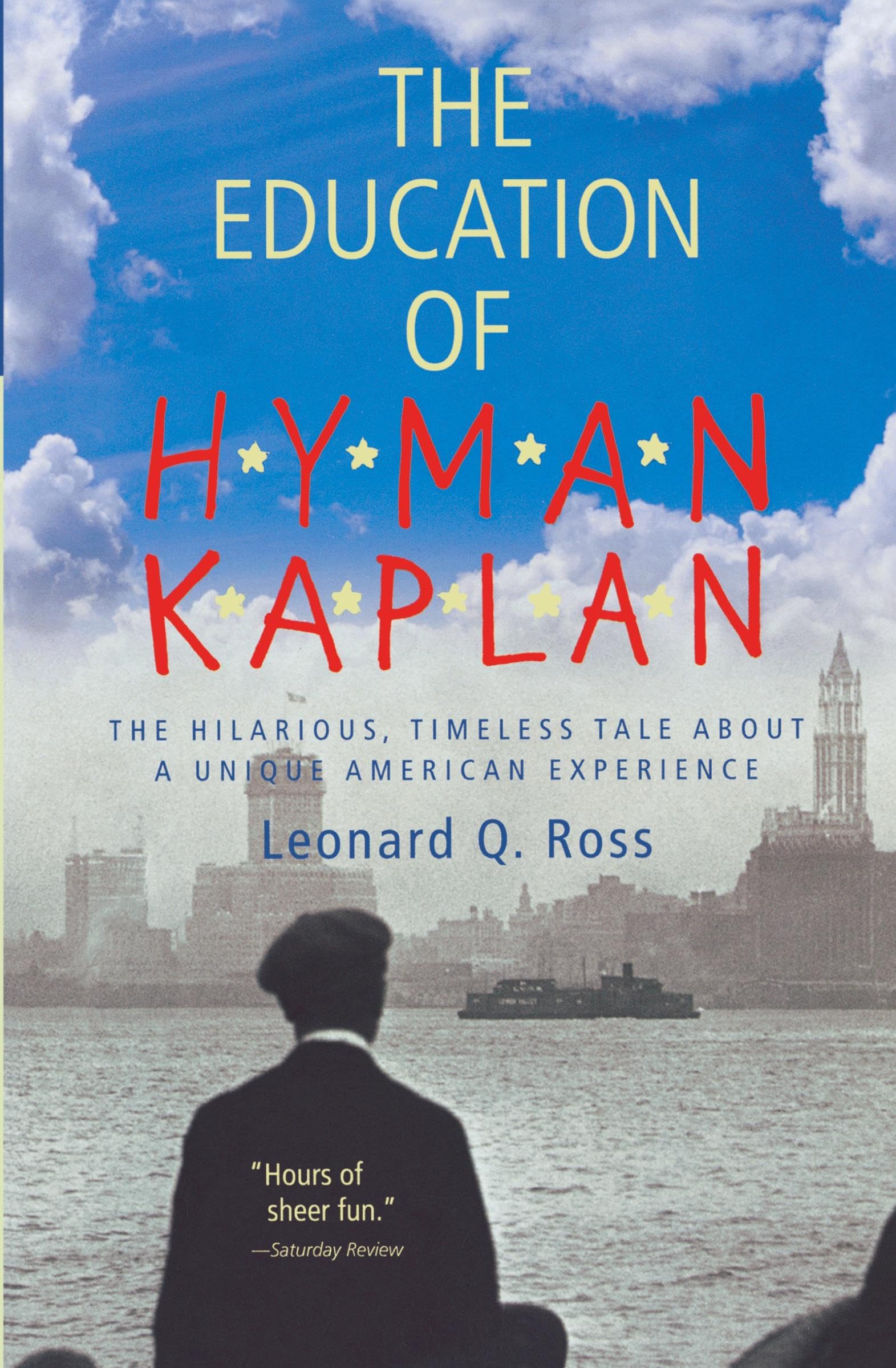Customer Services


The Education of H*Y*M*A*N K*A*P*L*A*N
E**K
Humor with the foibles of the English language : Hyman Kaplan!
I'd read this some decades ago, and bought this for my grammatically-correct avid reader daughter for Christmas. My only regret is I didn't have time to read it myself before sending it on. :(Only got to about page 40, but the mail carrier was en route and I had to get the box taped shut. :(Still sad about this. :(This book had me laughing within the first few pages. The challenges of the English language and the self-assured Hyman Kaplan are delightful.
D**P
Teaching English? Thinking over immigration as an issue? Read this wonderful and heartwarming book
These stories set in Mr. Parkhill's classroom at the American Night Preparatory School for Adults ("English -- Americanization -- Civics -- Preparation for Naturalization") are wonderfully humorous and warm. They reflect a generous humanity and a keen ear for language in author Leo Rosten (1908-1997), who first wrote the stories for The New Yorker using the pen name Leonard Q. Ross.When Rosten wrote the stories in the 1930s, the debate that had roiled American society over the high levels of immigration at the beginning of the century had ended with passage of the restrictive Johnson-Reed Immigration Act of 1924. Readers of The New Yorker could well remember the rancor and the stereotyping of the debate.Rosten countered the prejudice against immigrants by portraying Mr. Parkhill's students, drawn from several national and ethnic groups, as earnest learners eager to know about and join American society by first learning the English language.When people from different cultures meet, there are bound to be some collisions. A dark side take on those meetings is the ethnic joke. The bright side is this book, finding humor in the encounters that all can smile at.I read The Education of H*Y*M*A*N K*A*P*L*A*N as a teenager in the early 1960s. Though I do not recall negative attitudes about immigration in my family, school, or suburban New Jersey neighborhood in that decade, the book surely shaped my attitudes and feelings about immigrants and immigration in a positive way. Hyman Kaplan taught me immigrants make America a better and richer society.Each time I look through the book now, I worry whether Rosten crossed any of our modern "PC" redlines that would cause it to be crossed off reading lists. The book's humor ("comic dialect" is the scholar's term) depends on the rendering of accents, not much used at present. I found one use of the N-word (misspelled, in accent, not in anger) by a student character. On the whole, however, the book stands up well.I give copies of this book to friends who are ESL (English as a Second Language) teachers. Leo Rosten's own nights as an ESL teacher, while he was working on his Ph.D., gave him the inspiration for the stories.The shape of our nation's immigration policy is certainly a licit issue for debate and disagreement. Current immigration has some different countours than in the 1930s. Some voices, however, get carried away and tip over into negative stereotyping. They should take a break, have a cup of coffee, read this book, and meet Mr. Kaplan.-30-
E**R
Amusing writing, but somehow it feels a little too nostalgic.
Everyone in my parents' circle of friends seemed to own this book, when I was growing up in New York City in the 1960s, but somehow I never got around to reading it. A recent conversation piqued my interest in the subject, enough for me to seek out a used copy... and I have mixed feelings.Ultimately, I enjoyed the collection of related short stories But rather than successful nostalgia -- bringing a moment of the past into the present -- I kept feeling as though this is dated.And it shouldn't. Let me explain.In the 1930s, Leo Rosten wrote a series of magazine stories about students in one teacher's classroom at the American Night Preparatory School for Adults. Mr. Parkhill is the teacher whose goal is to teach adults enough English language skills and cultural know-how to prepare them for citizenship tests and naturalization -- everything from vocabulary to how to write a business letter. But he has one problem student, Hyman Kaplan, who remains oblivious to what he's supposed to be learning. Each story includes a lot of... I want to call them "bilingual puns" but the language malapropisms are cast as the way that an Eastern European immigrant would misinterpret them. In a language Q&A session, for instance, Kaplan asks, "So de foist qvastion. Vat's de minnink fromm 'A room is goink arond'?"As I read the book now, I smiled frequently but laughed aloud only a few times. The stories are sweet, and heartwarming, and amusing... though I remember my parents' friends thinking the book was hysterically funny. I"m sure that The Education of H*Y*M*A*N K*A*P*L*A*N resonated in the adults' community because most of them were second-generation Americans whose own family spoke and behaved the way Kaplan did.American life has gotten far more diverse now, with the melting pot having an even wider range of cultural ingredients. That thought brings me joy, so I imagined that The Education of H*Y*M*A*N K*A*P*L*A*N would have new layers of meaning today. Somehow, it doesn't.I'm not sorry that I finally got around to reading the book. It's an easy, quick read (and family friendly, if that matters to you). But it's okay if you miss it.
Trustpilot
2 months ago
3 days ago